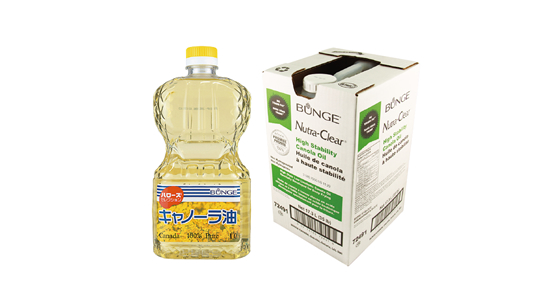
In terms of product, Cold-pressed Canola Oil is the largest segment, with a share over 70%. Europe is the largest market, with a share about 35%, followed by China and Canada, both have a share about 45 percent. Global top three manufacturers hold a share about 30%. Global Canola Oil key players include Louis Dreyfus Company, ADM, Bunge, etc. It is also used in food industry, biofuels and oleo chemicals etc. The report includes region-wise market size for the period 2022-2028.It also includes market size and forecast by players, by Type, and by Application segment in terms of sales and revenue for the period 2022-2028.Ĭanola oil is a kind of oil obtained from the seeds of rapeseed. Segment by Application, the Canola Oil market is segmented into United States, Europe, China, Japan, Southeast Asia, India and Rest of World. The Report provides potential market opportunities and Major Regions that plays a vital role in market are North America, Europe, China, Japan, Middle East and Africa, India, South America and Others.Ĭanola Oil Market Segmentation by Types, By Applications and By Region:Ĭanola Oil market is analyses and market size information is provided by regions (countries). The competitive data type analysis includes capacity, market trends, profit margin, market growth, imports, exports, revenue and Marketing strategies, policies, industry chain analysis that are changing the wave of the market are also catered in the report. “Canola Oil Market”(2022-2028) report identifies Sales of Market by regional analysis by product type and product applications. The report presents information about the top regions of the world and countries with their regional development status, volume, market size, market value, and price data. Global“ Canola Oil”Market Research Report 2022 – Impact of COVID-19 on the Market: The report contains financial data achieve from various research sources to provide specific and reliable analysis. The report presents information about the top regions of countries with their development status, volume, market size, market value, and price data. The report contains financial data achieve from various research sources to provide specific and reliable analysis. The introduction of high-yielding rapeseed-mustard varieties, hybrids and refinement of the improved production and protection technologies by the Directorate has contributed significantly in improving the production and productivity of Rapeseed-Mustard in India besides enhancing quality of the produce.Canola Oil market 2021-2026 development strategy pre and post covid-19, by corporate strategy analysis, type, application, and leading 20 countries. During the last 20 years, persistent efforts of the scientists of ICAR-DRMR and AICRP-RM has lead to the development of several improved Rapeseed-Mustard varieties, crop production and protection technologies. Nearly 74 per cent of the area under the crop is irrigated. Although rapeseed-mustard is cultivated in majority of states of the country, bulk of the production comes from Rajasthan (44.97 %), Haryana (12.44 %), Madhya Pradesh (11.32%) Uttar Pradesh (10.60 %), and West Bengal (7.53 %) during (2014-15 to 2018-19). The average rapeseed-mustard yield in India is about 1499 kg/ha compared to the combined oilseeds crops average of 1265 kg/ha (2018-19). Of the total area and production under the nine oilseeds crops grown in India, rapeseed-mustard accounts for 23.2% of the acreage and 26.2% of the production (2014-15 to 2018-2019).

Indian mustard accounts for about 80% of total hectares under these crops in the country. Rapeseed–mustard crops in India are grown in diverse agro-climatic conditions ranging from north-eastern to north western hills and down south under irrigated/rainfed, timely/late sown, saline soils and mixed cropping. Rapeseed-mustard are the important oilseed crops and also one of the second largest oilseed crops in India. India is the third largest producer of rapeseed-mustard after Canada, China and contributing to around 11 % of world’s total production. It is also utilized for flavouring, medicinal and preservative purposes since time immemorial. Each and every part of the plant is of importance in the human livelihood. It is world’s third most important source of edible oil after soybean and oil palm. The importance and potential of rapeseed-mustard crop is well known as it is the key oilseed crop that can help in addressing the challenge of demand - supply gap of edible oil in India.


 0 kommentar(er)
0 kommentar(er)
